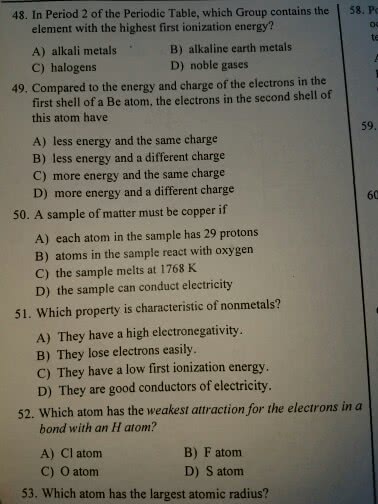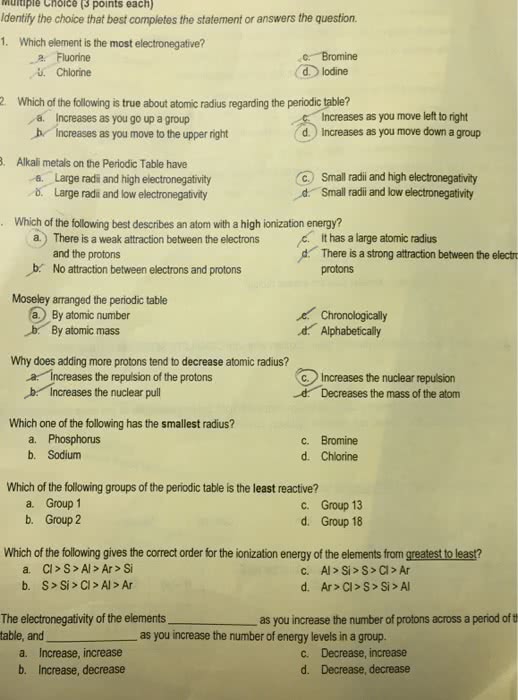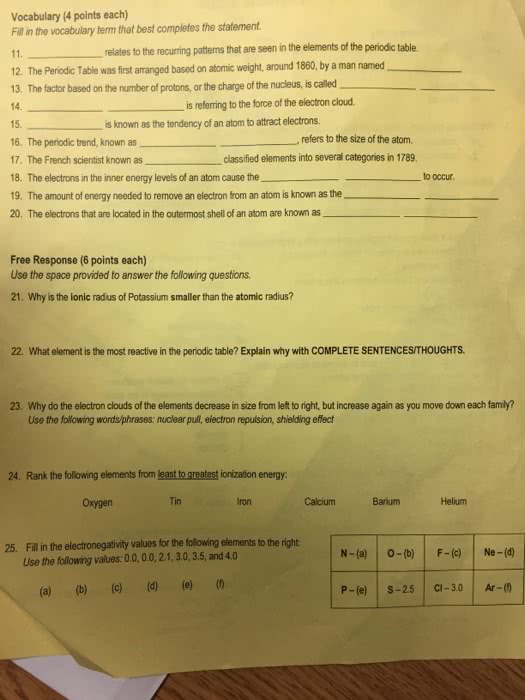CHEM 1021 Lecture Notes - Lecture 36: Atomic Radius, In C, Isoelectronicity
43 views3 pages
Document Summary
Metals: are reactive if they form cations (lose electrons from the valance shell) easily: most reactive are in the bottom left of periodic table. Nonmetals: are reactive if they form anions (gain electrons into their valance shell) easily: most reactive are in the upper right of the periodic table. Ionization energy (ie): energy required for the complete removal of 1 mole of electrons from 1 mole of gaseous ions or atoms. Atom (g) ion^+ (g) + e^- Ion^+ (g) ion^2+ (g) + e^: atoms with low ie(1) tend to form cations, atoms with high ie(1) (except noble gases) tend to form anions. Clicker question: rank the elements in order of increasing ie(1): si, f, in, n: in
Get access
Grade+
$40 USD/m
Billed monthly

Homework Help
Study Guides
Textbook Solutions
Class Notes
Textbook Notes
Booster Class
10 Verified Answers
Class+
$30 USD/m
Billed monthly

Homework Help
Study Guides
Textbook Solutions
Class Notes
Textbook Notes
Booster Class
7 Verified Answers
Related textbook solutions
Chemistry: Structure and Properties
2 Edition,
Tro
ISBN: 9780134293936
Basic Chemistry
5 Edition,
Timberlake
ISBN: 9780134138046
Principles of Chemistry Molecular Approach
4th Edition,
Tro
ISBN: 9780134112831
Principles of Chemistry Molecular Approach
3rd Edition, 2014
Tro
ISBN: 9780321971944
Chemistry: Structure and Properties
2nd Edition,
Tro
ISBN: 9780134293936
Chemistry: A Molecular Approach
3rd Edition,
Tro
ISBN: 9780321809247
Chemistry: A Molecular Approach
5th Edition,
Tro
ISBN: 9780134874371
Principles of Chemistry: A Molecular Approach
4th Edition,
Tro
ISBN: 9780134895741
Chemistry: The Central Science
14th Edition, 2017
Brown
ISBN: 9780134414232


